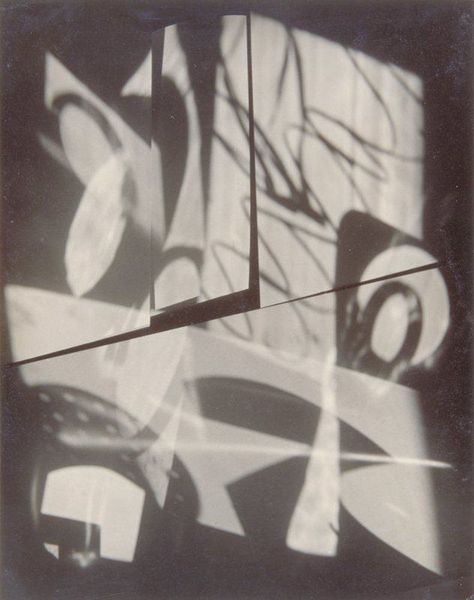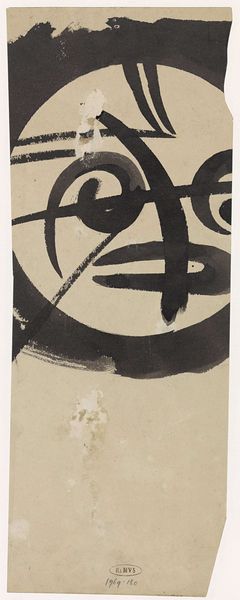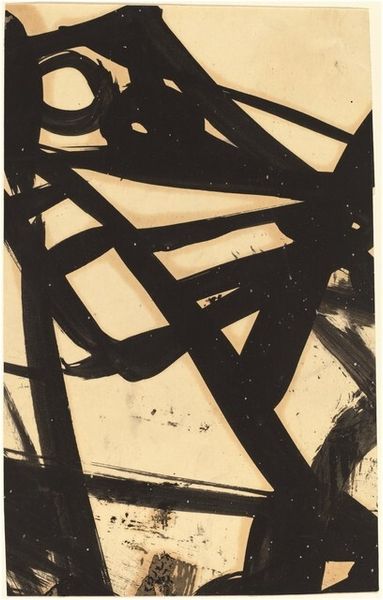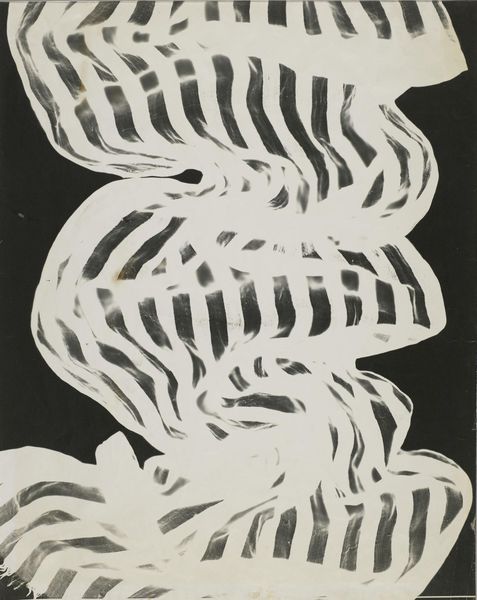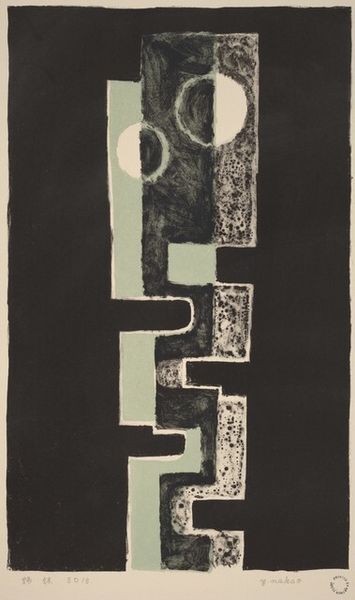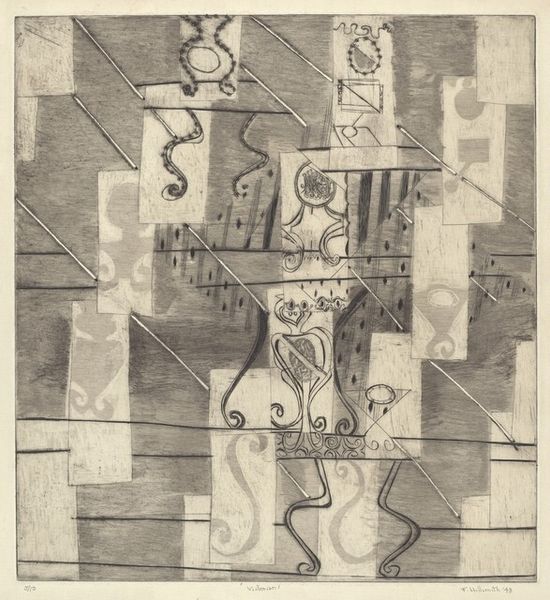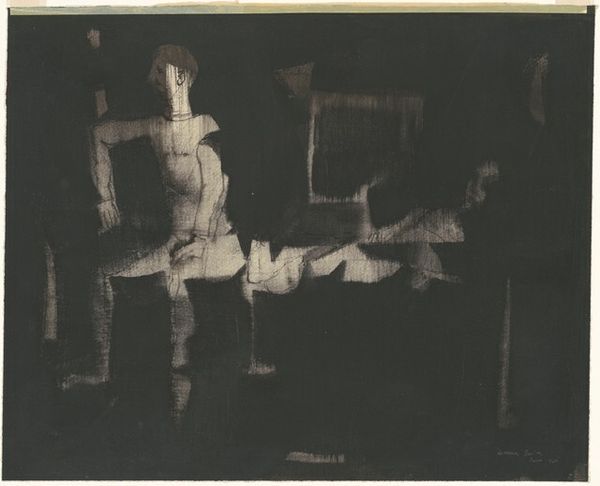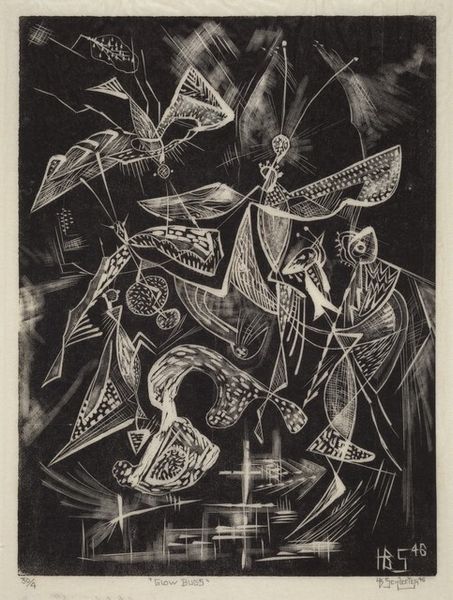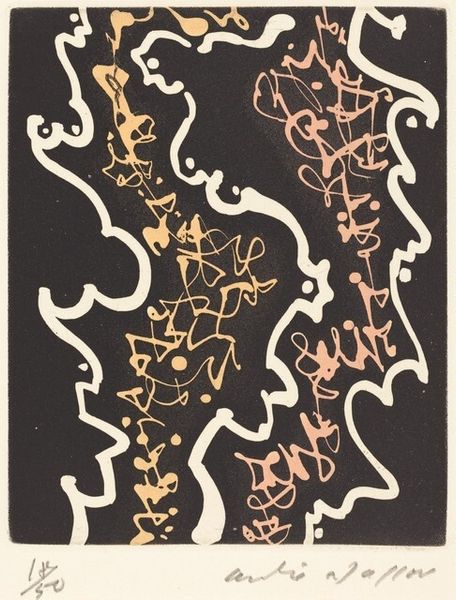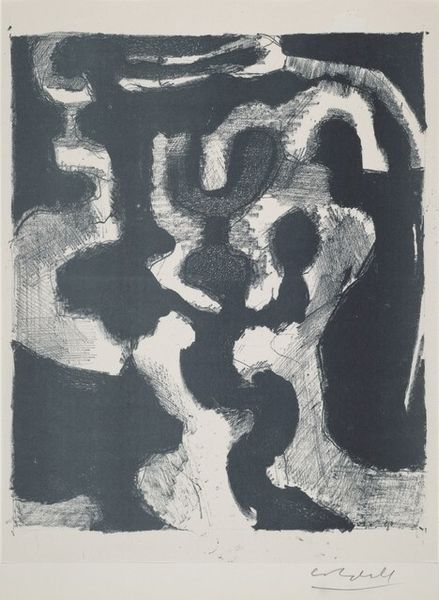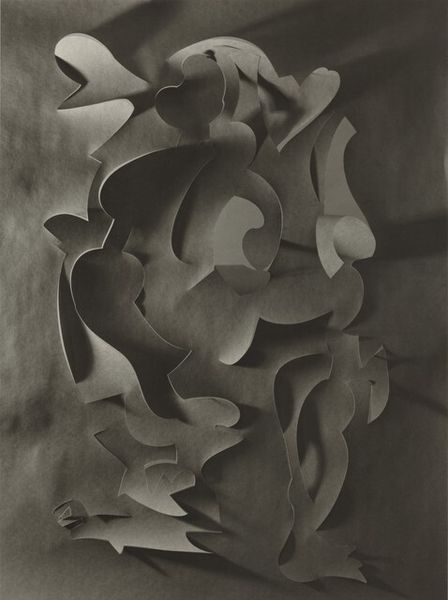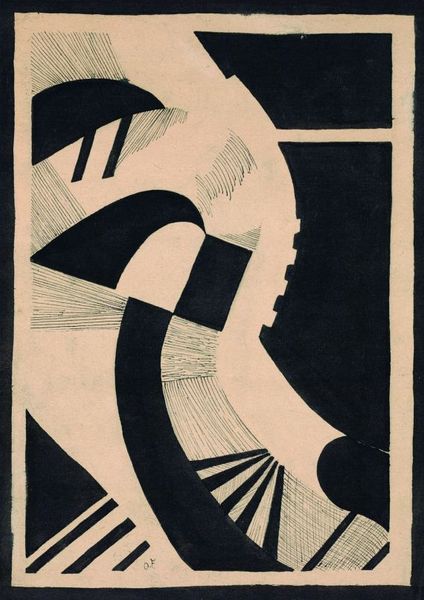
gelatin-silver-print, photography, gelatin-silver-print
#
abstract-expressionism
#
gelatin-silver-print
#
non-objective-art
#
form
#
photography
#
geometric
#
gelatin-silver-print
#
line
Dimensions: 10 7/8 x 8 7/8 in. (27.62 x 22.54 cm) (image, sheet)
Copyright: No Copyright - United States
Curator: Before us is an “Untitled” gelatin silver print by László Moholy-Nagy, created sometime between 1937 and 1944. It’s currently part of the Minneapolis Institute of Art’s collection. Editor: It's ethereal. The overlapping shapes create such movement. And that stark contrast! Almost ghostly. Curator: The composition speaks to Moholy-Nagy’s exploration of form and light, key elements in his non-objective art. The shapes, seemingly geometric, are not easily decipherable, which compels us to search for meaning within the visual relationships. It appears to be various lengths of paper. Editor: That interplay of geometric and organic does create a dynamic tension. What's intriguing to me is that these shapes seem like relics of industry somehow repurposed, frozen in time. Knowing this piece was made during the pre-war years, it's difficult not to view it through a socio-political lens. It also fits into a Bauhaus art program approach of playing with media and breaking the mold. Curator: The symbolic ambiguity also lends itself to psychological interpretations. Circles, lines, zig-zags – these all have established symbolic weight, touching upon emotional triggers buried deep in our subconscious, perhaps calling forward memory fragments that can never fully surface, always lingering. Editor: It really encourages one to consider what art institutions chose to celebrate as modern—what was deemed aesthetically "correct," but perhaps lacked an awareness of how quickly popular aesthetic choices evolve under various public pressures and anxieties. I mean, think about it— the late '30s, early '40s…so much was happening in the world and being reflected through artistic trends that institutions might not have understood immediately. Curator: Absolutely. The act of display, especially in photography, is rife with implication, isn’t it? As a curator, that is an aspect of the conversation I want to encourage around our galleries. It makes the artistic statement far richer, beyond form and composition. It certainly enriches this piece and my experience. Editor: Agreed. Considering the time period and institutional validation transforms something simple into something poignant and complex. I walk away appreciating the conversation between social understanding and what is right in front of our eyes, lines and shapes suspended in a photographic moment.
Comments
minneapolisinstituteofart almost 2 years ago
⋮
László Moholy-Nagy was a leading figure of the Bauhaus, a modern art and design school founded by the architect Walter Gropius, as well as being a prominent member of the related New Objectivity Movement. Moholy-Nagy worked as a painter, graphic artist, photographer, and teacher, and he produced this image without a camera by arranging objects directly on a sheet of photo paper and exposing it to light. The resulting photogram is a negative shadow image with tonal variations. Although this process was used by photographers in the 1800s and popularized as a children’s amusement, 20th-century avant-garde artists revived it as a way to embrace abstraction and explore the optical properties of light.
Join the conversation
Join millions of artists and users on Artera today and experience the ultimate creative platform.
